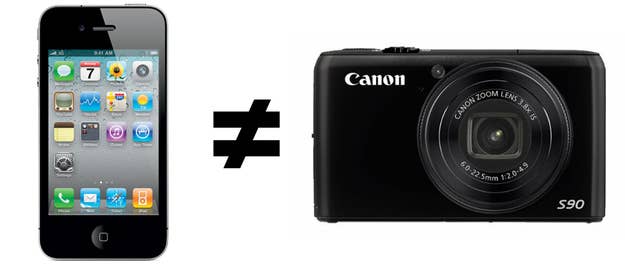
Sometime in the last year, I gave up on carrying a camera. My phone is compact, quick, has the ability to share photos directly, and, at least to my eye, produces photos that are nearly comparable to my $700 interchangeable lens camera. In most contexts, I stand by that — on Facebook, in iPhoto, or on Instagram, my iPhone photos look fine. Great, even.
But one thing I noticed when I first used a Retina iPad, which automatically pulled in my old iPhone shots from the cloud, was that these "good enough" photos looked awful. Grainy, blotchy, and even kind of blurry. Evidently the new Retina MacBook has the same effect. Marco Arment, creator of Instapaper, says it's driving him back to his DSLR:
As part of my 2012 computer-setup shuffle, I also replaced my laptop with a Retina MacBook Pro, and the first thing it screams for is a high-resolution desktop wallpaper. Great, I thought, I’ll just use one of my photos. (On my desktop, I use a solid gray background, but on my laptop, I like to have a bit of fun. And it would be a crime to put a solid gray background on that screen.)
Almost nothing I’ve shot since 2010 is usable.
He's so disappointed with his cellphone photo quality that he's migrating back to a Canon 5D Mk II, which isn't just a nicer camera, it's one of the nicest consumer cameras ever made.
The Retina MacBook is a premium product for now, but few doubt that Apple, and other computer manufacturers, will move to Retina-grade displays across the board. It's just a matter of price and time. This is great in all ways but one: it's going to make our photos look like crap.
It's not a megapixel problem, exactly. Most common smartphone photo sizes compare favorably to even a Retina MacBook's screen:
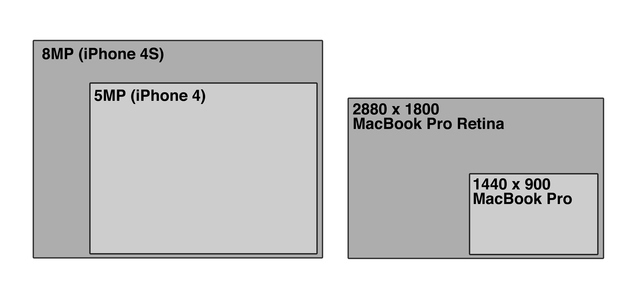
Even a 5MP smartphone, such as the first iPhone 4, shoots photos that are about the same resolution as the Retina MacBook's screen:
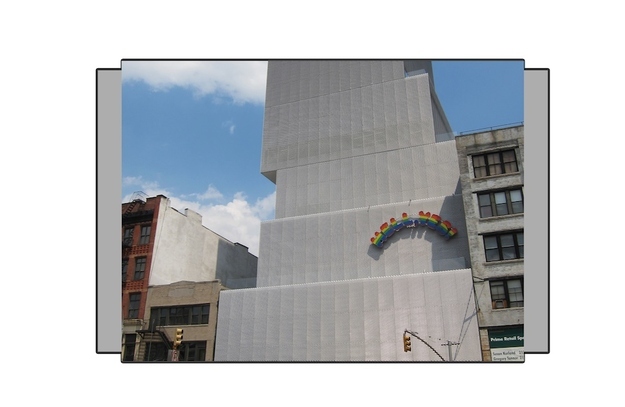
An 8MP camera, like the iPhone 4S's, produces significantly larger photos. So what's the problem? Photo quality.
Cellphones shoot relatively high-resolution photos, but do so with a much smaller sensor than a dedicated camera. This means there's less room on the sensor for each pixel to gather light, which means there's more noise in the photos. And then there's the issue of optics — a dedicated camera will be shooting through a larger, more expensive lens, which ensures a level of sharpness that it's hard to get with a smartphone's tiny optical system. In other words, while photo resolution is the same, photo quality is much lower.

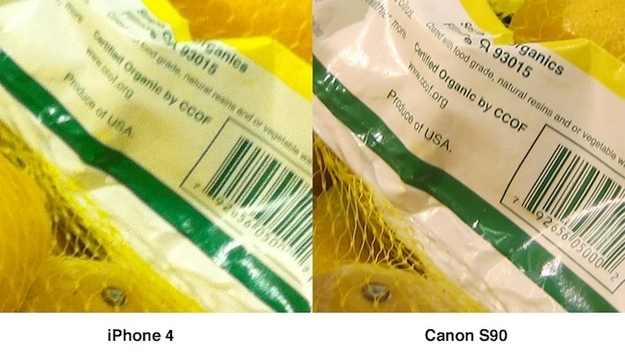
I, and millions like me, have tolerated the lower quality of smartphone photos because it's rarely been visible, at least since the iPhone 4/Droid/Evo era. (That's when the "the best camera is the one you have with you" pro-phone-camera sentiment really took off.) And with current screens, you have to blow the photos up, as above, to even see these imperfections. Put an iPhone 4 photo next to an S90 photo at a typical display resolution and you can't really tell the difference:
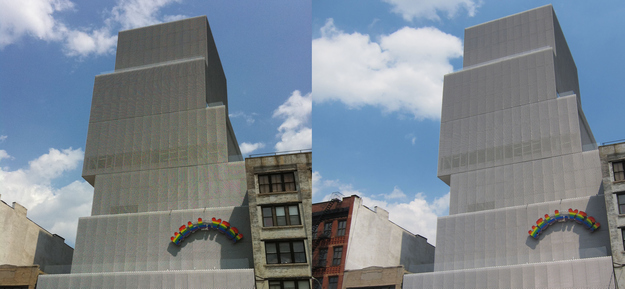
If you know what to look for (dynamic range and saturation, mostly), you can tell that the photo on the left came from a cellphone. If you're not picking nits, though, you won't notice, unless you're using a large Retina screen. Few of us are right now, but within a couple years, super-high resolutions will be the norm. Then, looking at our old cellphone photos will feel like watching SD cable on an HDTV. It's going to be horrible, and it's going to make us all feel like we jumped the gun a little. Good enough won't be good enough anymore.
It's a stretch to say that super-high-res screens are going to reverse the tide, and stop the rapid replacement of cameras by cellphones. That, at least for most applications, is still inevitable. But with Retina-grade screens, the dominant display and camera technologies are falling out of sync for a while. Cellphone cameras will one day shoot clean enough photos to cleanly display at full resolution on a Retina screen. Just, not yet. And not terribly soon.
That doesn't mean you have to spend $1500 on a new DSLR or $700 on a compact interchangeable lens camera just to take Christmas photos — a ~$300 point-and-shoot will do just fine. And it doesn't mean that you need to stop taking pictures with your phone; I'll still take the vast majority of mine with my 4S, if only to throw them on Instagram and Facebook.
But it does mean that it might be a good idea to keep a real camera around for a few more years.
